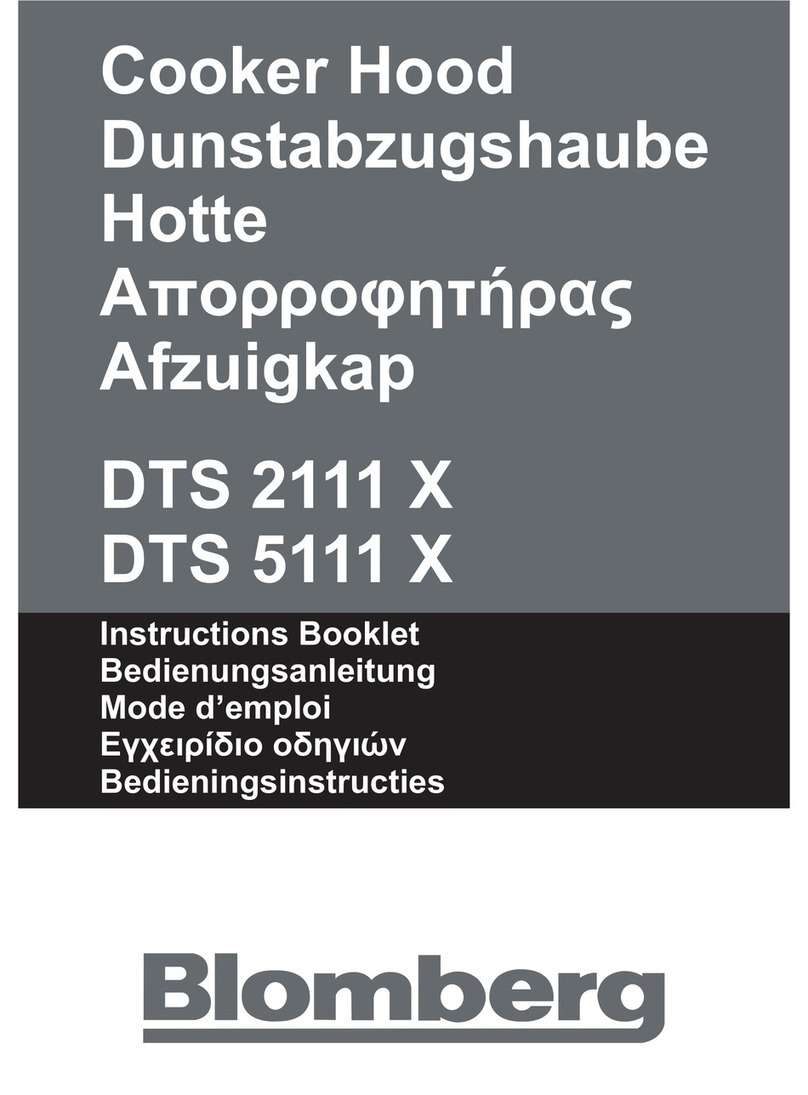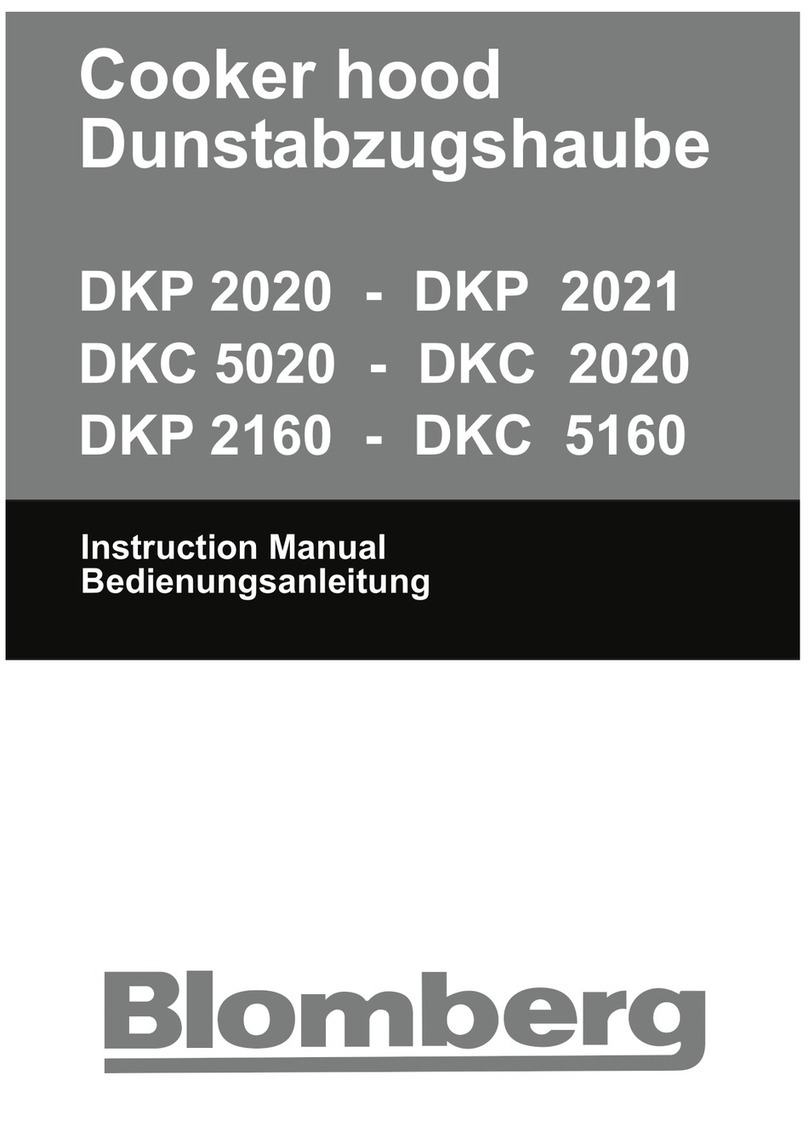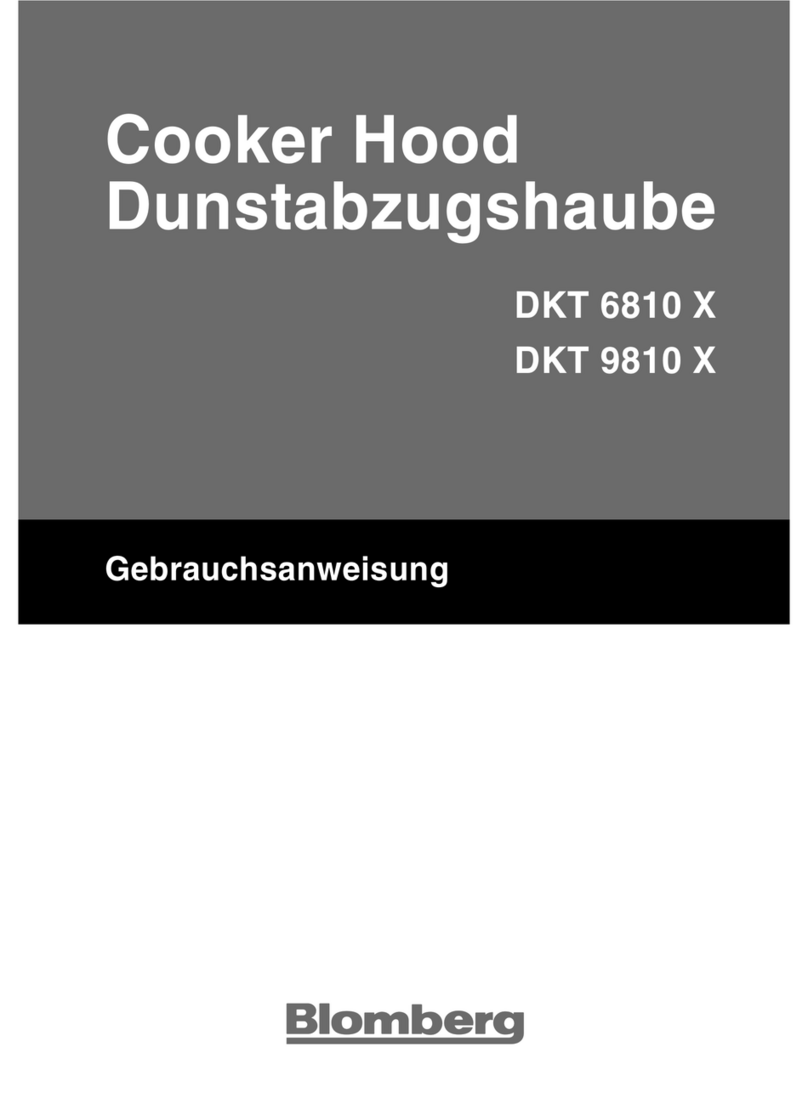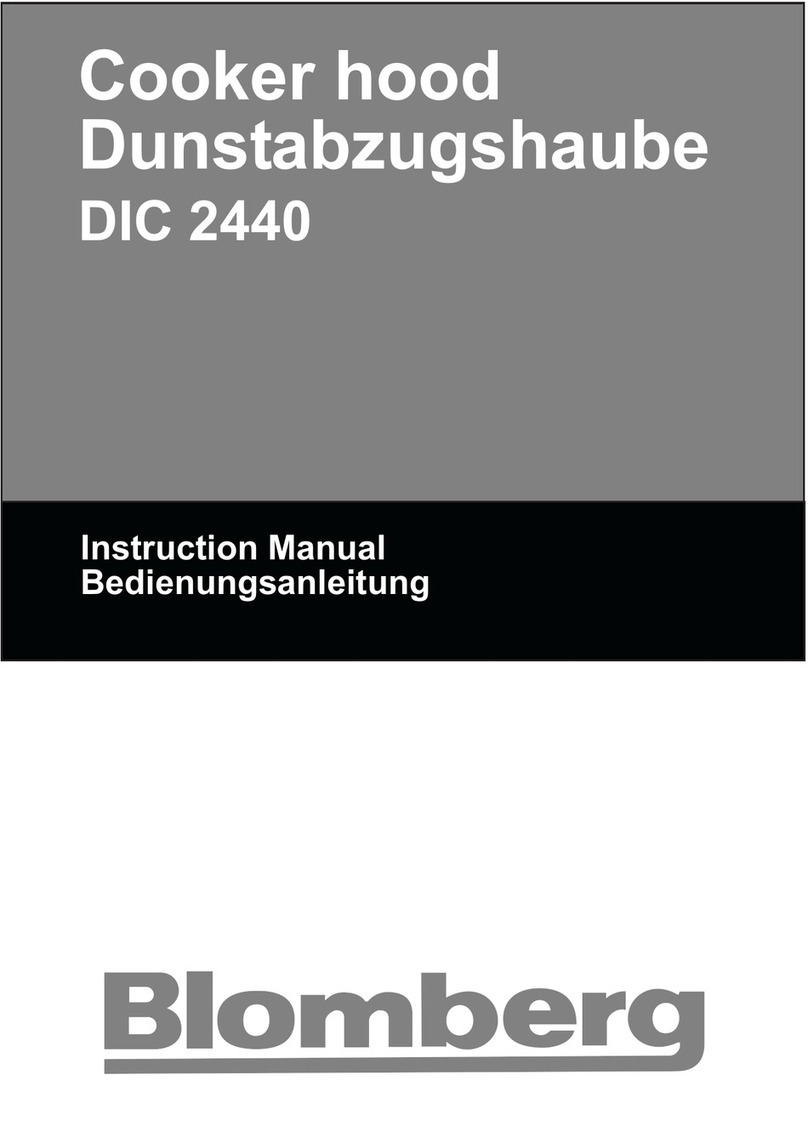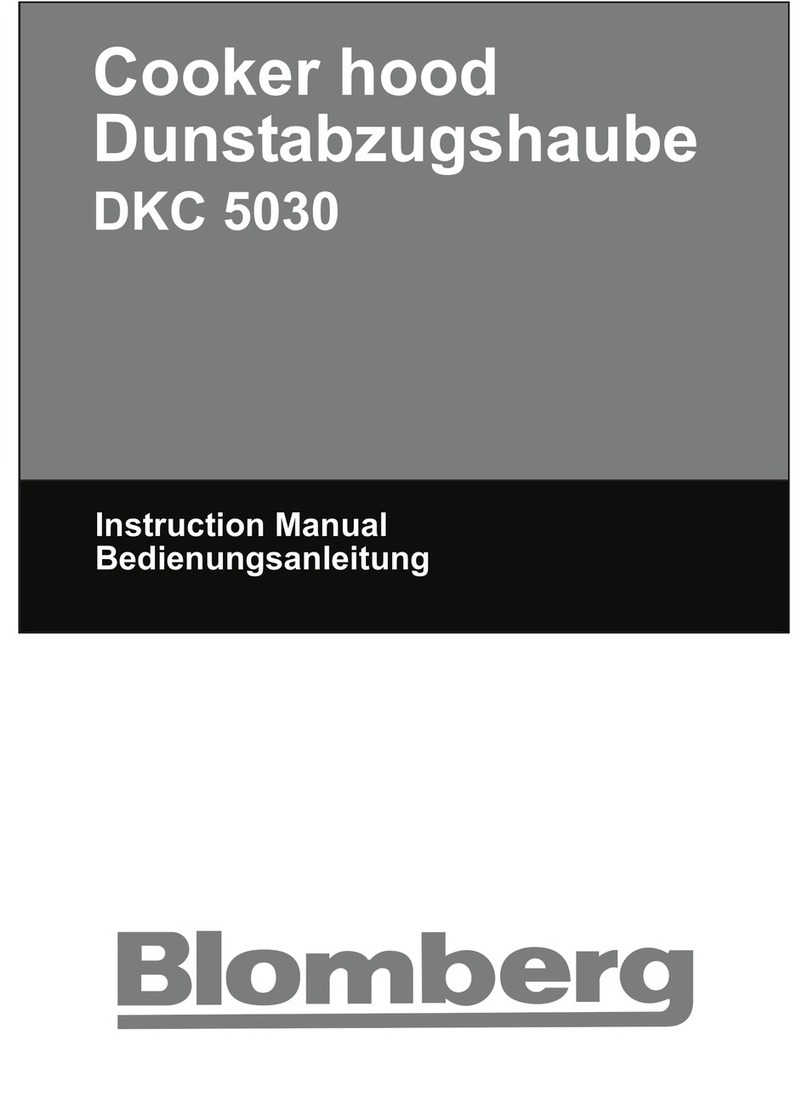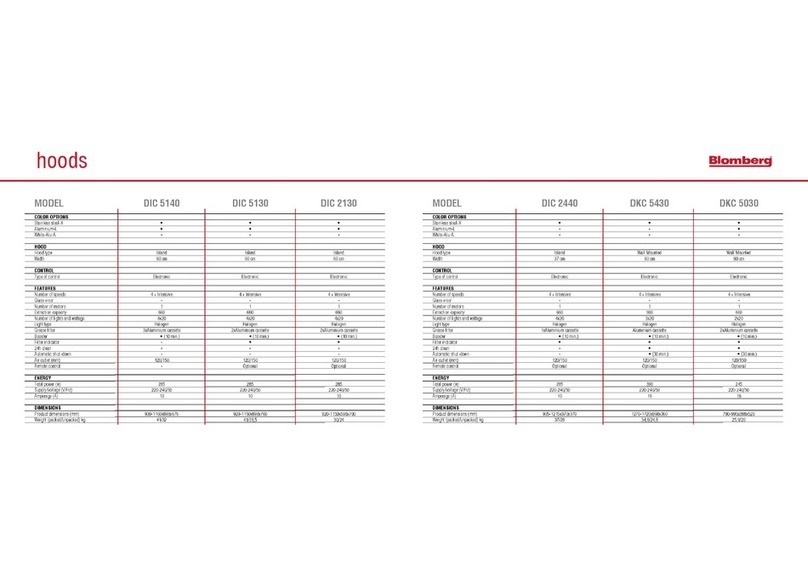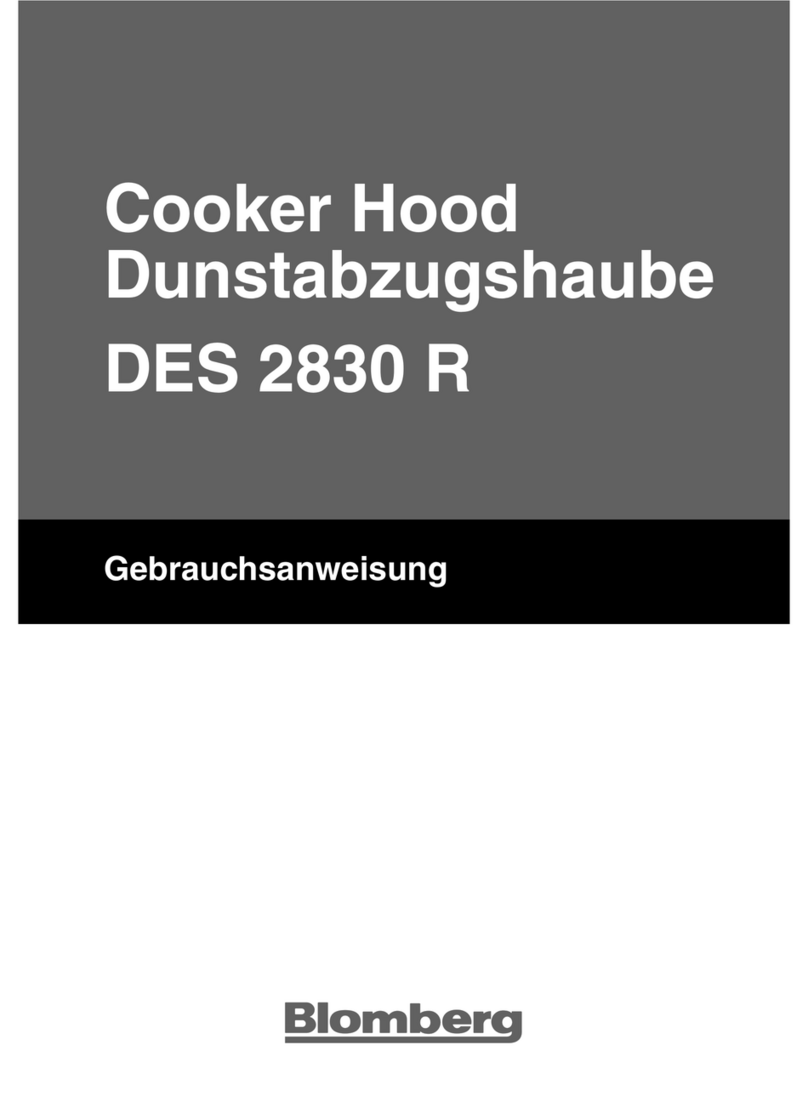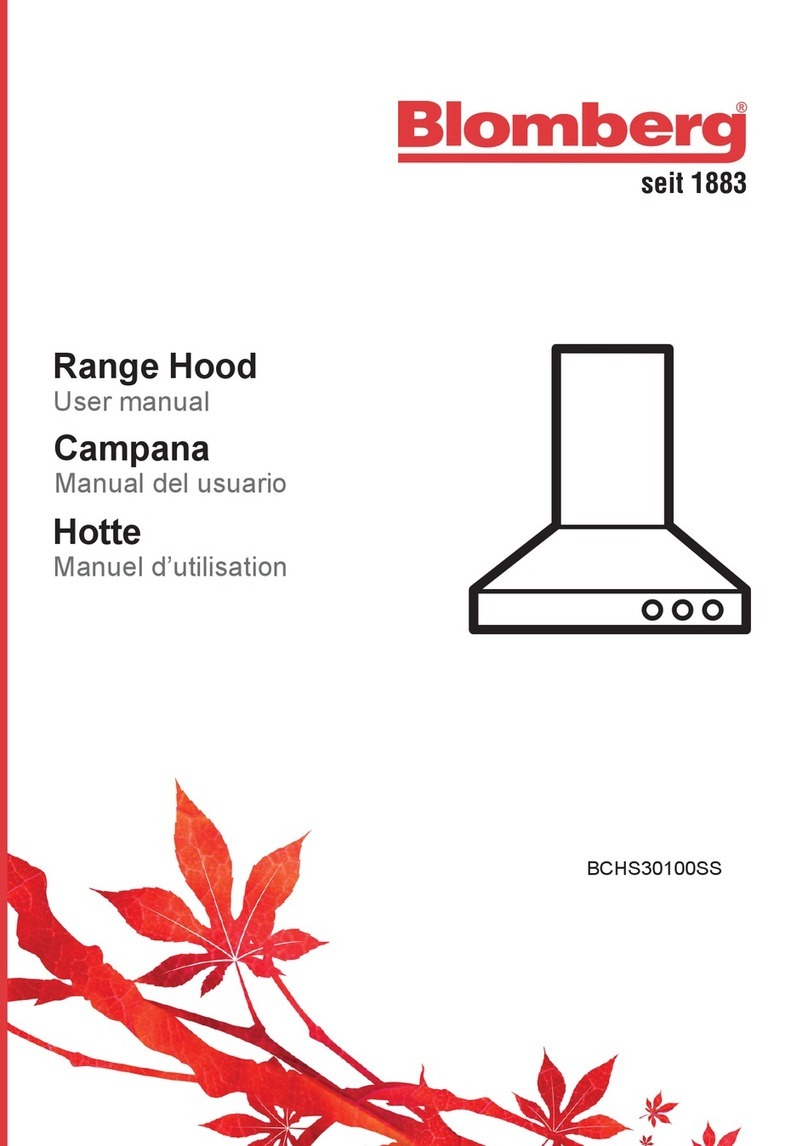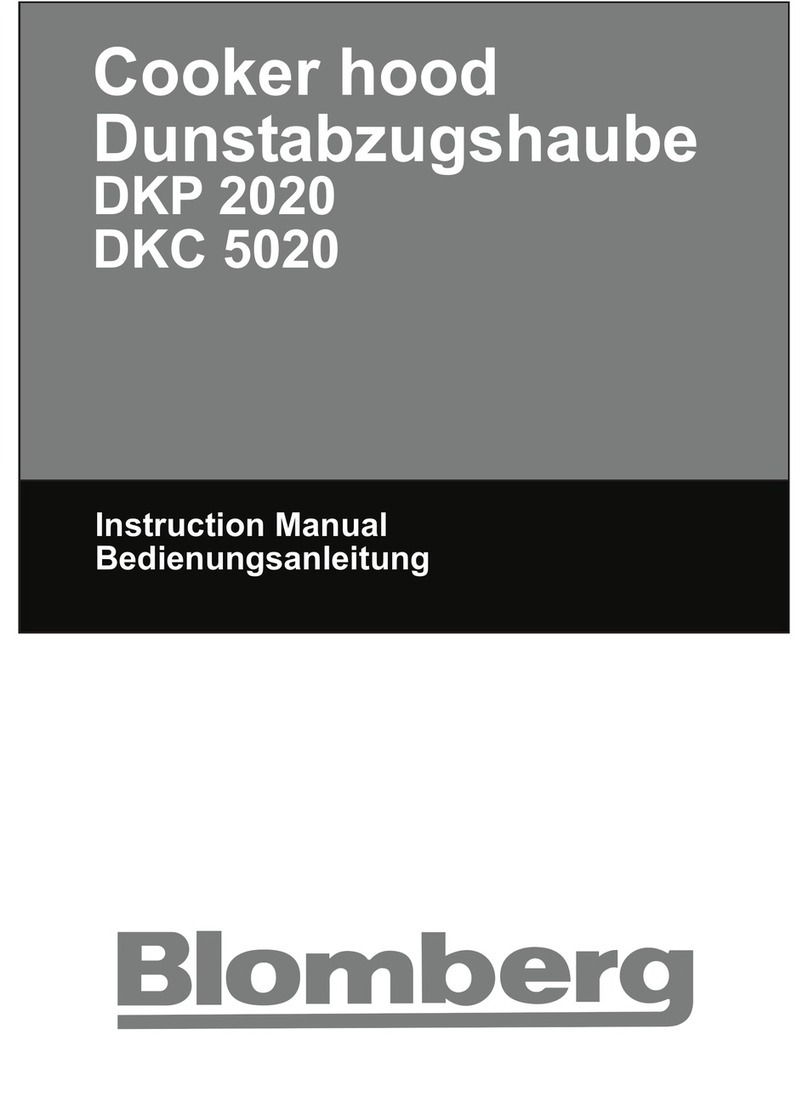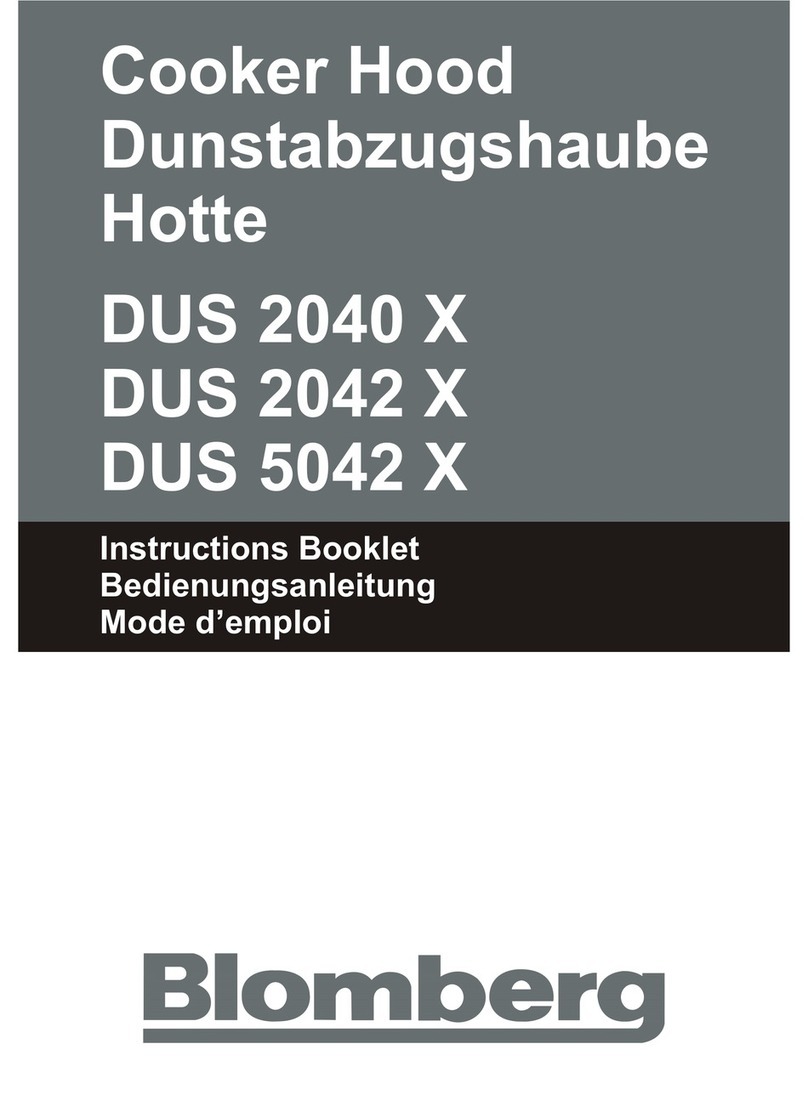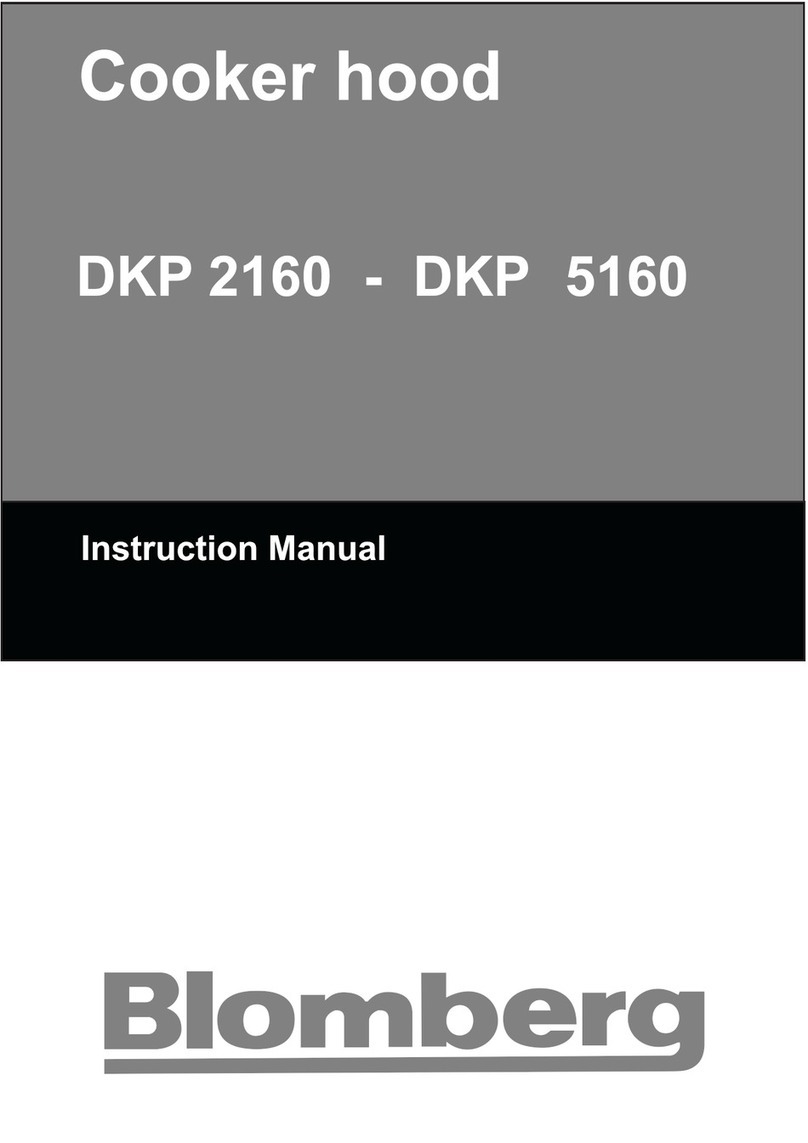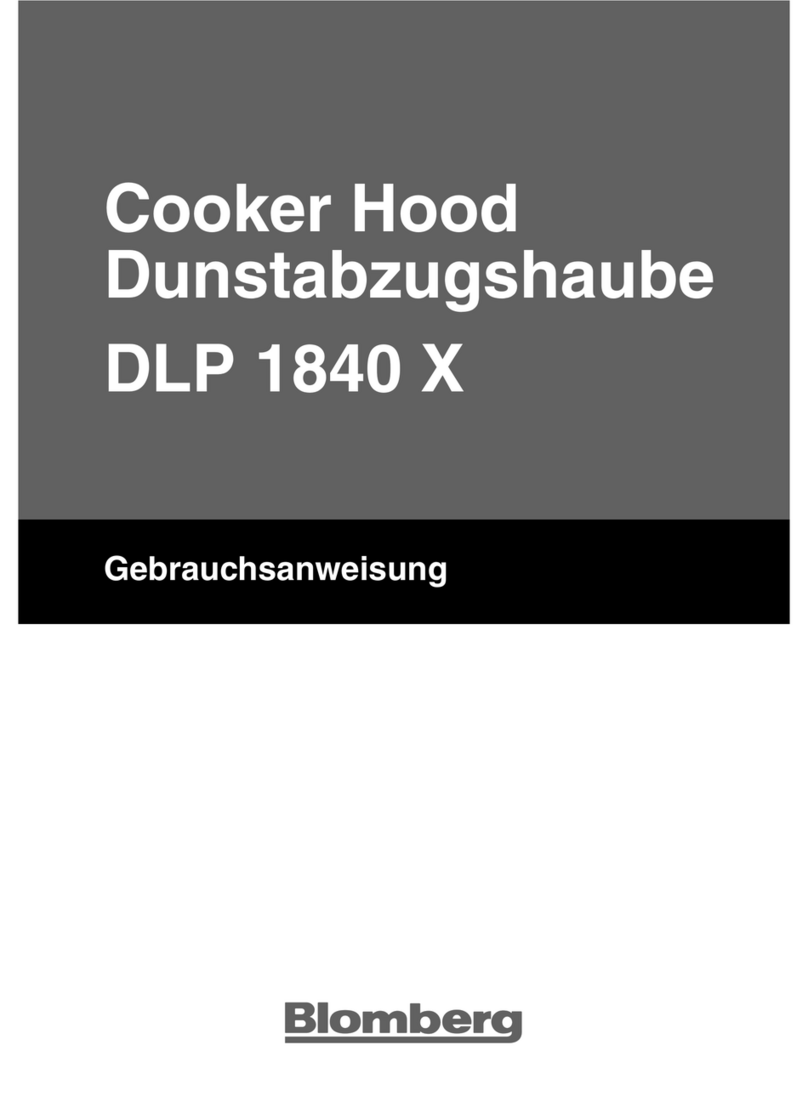
8 / 62 EN Range Hood / User Manual
2 Electrcal & Installaton requrements
2.1 Electrical requirements
C
Observe all governing codes and
ordinances.
It is the customer’s responsibility:
To contact a qualified electrical installer. To assure
that the electrical installation is adequate and in
conformance with National Electrical Code, ANSI/
NFPA 70 — latest edition*, or CSA Standards C22.1-
94, Canadian Electrical Code, Part 1 and C22.2
No.0-M91 - latest edition** and all local codes and
ordinances.
•If codes permit and a separate ground wire
is used, it is recommended that a qualified
electrician determine that the ground path is
adequate.
•Do not ground to a gas pipe.
•Check with a qualified electrician if you are not
sure range hood is properly grounded.
•Do not have a fuse in the neutral or ground
circuit.
C
Save Installation Instructions for
electrical inspector’s use.
C
The range hood must be connected
with copper wire only.
C
Therangehoodshouldbe connected
directly to the fused disconnect (Or
circuit breaker) box through metal
electrical conduit.
Wire sizes must conform to the requirements of
the National Electrical Code ANSI/NFPA 70 — latest
edition*, or CSA Standards C22.1-94, Canadian
Electrical Code Part 1 and C22.2 No. 0-M91 - latest
edition** and all local codes and ordinances.
A U.L.- or C.S.A.-listed conduit connector must be
provided at each end of the power supply conduit
(at the range hood and at the junction box).
Copies of the standards listed may be obtained
from:
* National Fire Protection Association
Batterymarch Park Quincy, Massachusetts 02269
** CSA International 8501 East Pleasant Valley
Road Cleveland, Ohio 44131-5575
2.2 Before installing the hood
1. For the most efficient air flow exhaust, use a
straight run or as few elbows as possible.
AWARNING:
Vent unit to outside
of building, only.
2. At least two people are necessary for
installation.
3. Fittings material is provided to secure the
hood to most types of walls/ceilings, consult
a Qualified Installer, check if they perfectly fit
with your cabinet/wall.
4. Do not use flex ducting.
5. COLD WEATHER installations should have an
additionalbackdraft damper installed to mini-
mize backward cold airflow and a nonmetallic
thermal break to minimizeconduction of out-
side temperatures as part of theductwork. The
damper should be on the cold air side ofthe
thermal break.The break should be as close as
possible to where theducting enters the heated
portion of the house.
6. Make up air: Local building codes may require the
use of Make-Up Air Systems when using Ducted
Ventilation Systems greater than specified CFM
of air movement. The specified CFM varies from
locale to locale. Consult your HVAC professional
for specific requirements in your area.
Removing the packaging
A
Remove carton carefully, Wear
gloves to protect against sharp
edges.
AWARNING:
Remove the protec-
tive film covering the product before
putting into operation.
